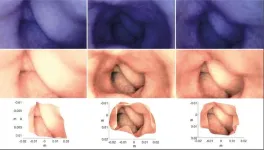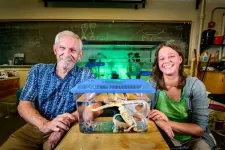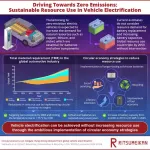(Press-News.org) Weill Cornell Medicine received a $1.5 million grant from the U.S. Department of Defense Prostate Cancer Research Program to develop new approaches for predicting the spread of cancer cells to the bone in men with prostate cancer, using tumor samples taken at early stages of the disease.
The American Cancer Society projects about 35,250 deaths from prostate cancer in the United States in 2024. “Metastases, especially to the bone, is the leading cause of death in men who have prostate cancer,” said principal investigator Dr. Mohamed Omar, assistant professor of research in pathology and laboratory medicine, division of computational and systems pathology, and member of the Sandra and Edward Meyer Cancer Center at Weill Cornell Medicine. “It's also associated with very high risk of skeletal fractures, severe pain and poor quality of life.”
Predicting which patients will develop bone metastases from their initial diagnosis of prostate cancer would be valuable in personalizing treatment plans—more aggressive therapy for higher risk patients and those who are at low risk of metastases could avoid unnecessary treatment.
Building a Predictive System to Personalize Treatment
Dr. Omar and his research team will work with multiple mouse models of prostate cancer to assess the molecular profiles and spatial arrangement of cells in the tumor and bone microenvironments. They will also study the size, shape and structure of these cells to determine how the cells interact with each other in the tumor microenvironment and with the surrounding healthy tissue.
Diving deeper, the researchers will study molecular activity in individual cells which involves identifying the gene expression profiles, gene regulatory networks and proteins produced by spreading cancer cells that help them travel to distant bone sites and form new tumors.
“Looking at all of these factors combined will help us to capture the complexity of the tumor and when cancer cells might spread to the bone,” Dr. Omar said. The patterns they discover will be validated in human prostate cancer samples. In addition, they will look for other human-specific indicators of bone metastases.
Ultimately, Dr. Omar and his colleagues will develop an artificial intelligence system that can predict the risk of bone metastasis by integrating these molecular and spatial patterns with images from patient tumor biopsies.
Though this type of predictive system will take several years to develop and validate in patients, this research is designed to produce important insights that could be applied in the interim, Dr. Omar said. “Our work identifying human-specific biomarkers of bone metastasis, for instance, could suggest novel therapeutic targets for drug development and could be used to improve the response rates to existing drugs.”
END
Weill Cornell Medicine awarded Department of Defense grant for prostate cancer bone metastases research
2024-06-25
ELSE PRESS RELEASES FROM THIS DATE:
New 3D models of the colon can help detect disease more rapidly
2024-06-25
“Our work shows that it is possible to re-create a fairly accurate three-dimensional (3D) model of the colon of some patients based on a single image taken by a capsule endoscopy camera - even if it's a low-quality image,” says Pål Anders Floor, a researcher at the Department of Computer Science at NTNU.
Goal: better images, faster diagnoses
He has been working for several years on using images from capsule endoscopy cameras to reconstruct an almost identical 3D model of the intestines. These cameras were first used more than 20 years ago, but low-quality images and image noise prevented this smart technology from ...
Study challenges ED protocols for geriatric head injuries and blood thinners
2024-06-25
Falls are the most common cause of injury among adults 65 and older in the United States. According to the U.S. Centers for Disease Control and Prevention, every year, more than 14 million older adults (one in four) report a fall. About 90% of head injuries among older individuals is due to ground-level falls.
Evaluating an older adult with a head injury in the emergency department (ED) requires careful assessment due to the increased risk of complications such as intracranial hemorrhage. There also is heightened concern for older patients taking anticoagulants or blood thinners who sustain ...
Team aims to improve safety of fertilizers made from wastewater sludge
2024-06-25
Fertilizers manufactured from the sludgy leftovers of wastewater treatment processes can contain traces of potentially hazardous organic chemicals, according to a new study by Johns Hopkins University researchers.
The research, published today in Environmental Science & Technology journal, provides one of the most comprehensive looks at the chemical composition of so-called biosolids across the country and is the first step toward identifying common chemical contaminants that may need government regulation. The findings could ...
From 'CyberSlug' to 'CyberOctopus': New AI explores, remembers, seeks novelty, overcomes obstacles
2024-06-25
CHAMPAIGN, Ill. — By giving artificial intelligence simple associative learning rules based on the brain circuits that allow a sea slug to forage — and augmenting it with better episodic memory, like that of an octopus — scientists have built an AI that can navigate new environments, seek rewards, map landmarks and overcome obstacles.
Reported in the journal Neurocomputing, the new approach gives AI the ability to explore and gather the information it needs to expand its spatial and temporal awareness, growing its knowledge base while learning on the job, said Ekaterina Gribkova, a postdoctoral researcher at the University of Illinois Urbana-Champaign who ...
The evolution of firefly lights
2024-06-25
The leading hypothesis for the origin of firefly lights has been overturned by a genomic analysis. It had been posited that the bright lights emitted by many species in the Lampyridae family of beetles—better known as fireflies—first evolved as a warning signal to predators, advertising the toxicity of fireflies, and were then repurposed as a mating signal. This explanation would account for why eggs, larvae, and pupae also glow. Ying Zhen and colleagues put the conventional wisdom to the test by compiling a family tree of fireflies and tracing the evolution of the chemical compounds ...
ASAP launches data-sharing tool with unique dataset of human postmortem-derived brain samples
2024-06-25
ASAP Launches Data-Sharing Tool with Unique Dataset of Human Postmortem-Derived Brain Samples
Aligning Science Across Parkinson’s (ASAP) launched a platform to make high-value data for Parkinson’s disease broadly available to researchers all over the world
The platform launches with data from a unique human postmortem-derived brain sequencing collection, including samples from four ASAP Collaborative Research Network (CRN) teams and 156 donors
The database will continue to expand, with 629 donors contributing to the final harmonized dataset; there will be a consistent cadence of new ...
Moving objects precisely with sound
2024-06-25
In 2018, Arthur Ashkin won the Nobel Prize in Physics for inventing optical tweezers: laser beams that can be used to manipulate microscopic particles. While useful for many biological applications, optical tweezers require extremely controlled, static conditions to work properly.
“Optical tweezers work by creating a light ‘hotspot’ to trap particles, like a ball falling into a hole. But if there are other objects in the vicinity, this hole is difficult to create and move around,” says Romain Fleury, head of the Laboratory of Wave Engineering in EPFL’s School ...
Sustainable electrification: Managing resource demands for future electric vehicles
2024-06-25
With goals to limit CO2 emissions, many countries have set targets to phase out internal combustion vehicles in favor of electric vehicles (EVs). Japan has set a target for 20-30% of all car sales to be battery electric vehicles (BEVs) and plug-in hybrid electric vehicles (PHEVs), and 30-40% of car sales to be hybrid electric vehicles (HEVs) by 2030. The USA plans for 50% of new vehicles to be zero-emission by 2030, while Germany wants to have 15 million EVs on the road by 2030. These goals raise concerns about the raw material demand for EVs. Batteries, which account for 50% of all resources consumed in BEV production, require ...
New AI program from BU researchers could predict likelihood of Alzheimer’s disease
2024-06-25
Trying to figure out whether someone has Alzheimer’s disease usually involves a battery of assessments—interviews, brain imaging, blood and cerebrospinal fluid tests. But, by then, it’s probably already too late: memories have started slipping away, long established personality traits have begun subtly shifting. If caught early, new pioneering treatments can slow the disease’s remorseless progression, but there’s no surefire way to predict who will develop the dementia associated with Alzheimer’s.
Now, Boston University researchers say they have designed a promising new artificial ...
Telltale greenhouse gases could signal alien activity
2024-06-25
If aliens modified a planet in their solar system to make it warmer, we’d be able to tell. A new UC Riverside study identifies the artificial greenhouse gases that would be giveaways of a terraformed planet.
A terraformed planet has been artificially made hospitable for life. The gases described in the study would be detectable even at relatively low concentrations in the atmospheres of planets outside our solar system using existing technology. This could include the James Webb Space Telescope, or a future European-led space telescope concept.
And ...






